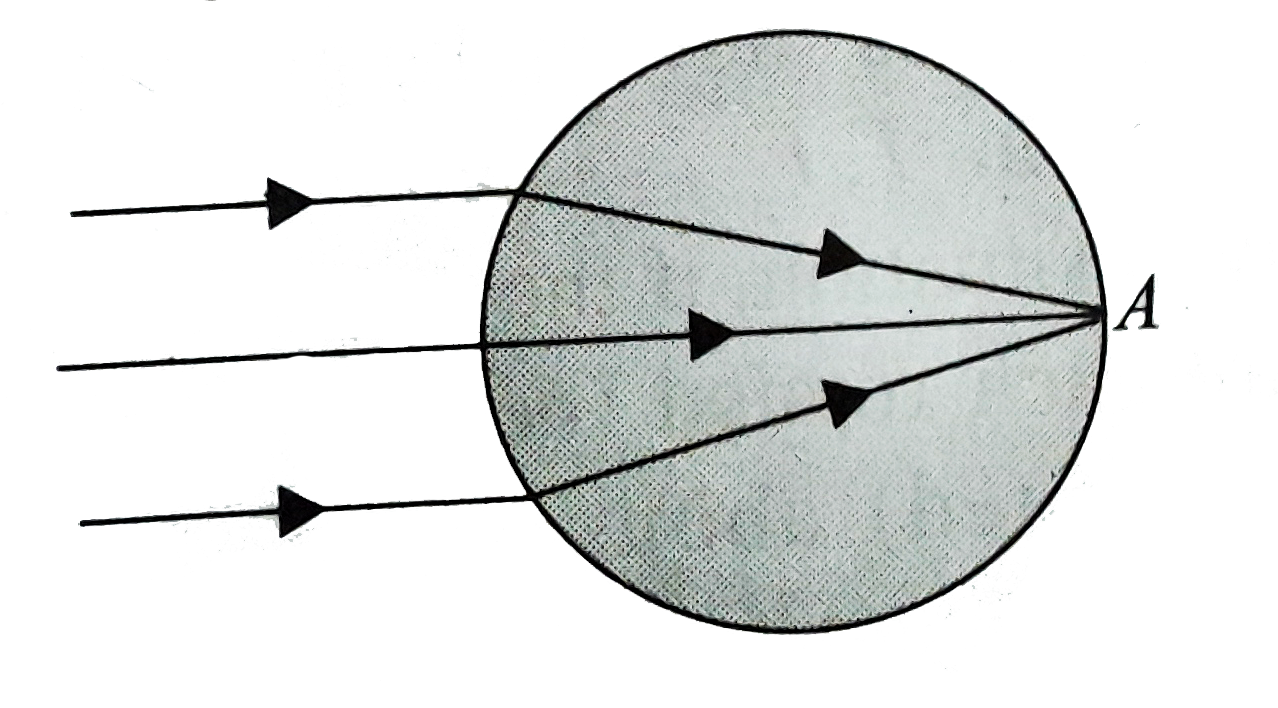In a dark room, a parallel beam of light falls on a plane mirror and another parallel beam of light falls on a white wall. The light reflected by the mirror can be seen only in a certain direction, but the reflected light from the wall can be seen from anywhere. Give reason.
To answer the question, we need to understand the concepts of reflection and the nature of surfaces involved.
1. Understanding Reflection:
- When light hits a surface, it can be reflected. The way light is reflected depends on the nature of the surface it strikes.
2. Characteristics of a Mirror:
- A plane mirror has a very smooth and shiny surface. This smoothness allows for regular reflection, also known as specular reflection.
- In specular reflection, the angle of incidence (the angle at which the light hits the surface) is equal to the angle of reflection (the angle at which the light bounces off). This means that the light reflects in a specific direction.
3. Characteristics of a White Wall:
- A white wall, on the other hand, has a rough and irregular surface. This irregularity causes diffused reflection, also known as scattering.
- In diffused reflection, light rays hitting the surface are reflected in many different directions, rather than just one. This happens because the uneven surface causes the light to bounce off at various angles.
4. Visibility of Reflected Light:
- Because the light reflected from the mirror is in a fixed direction, it can only be seen when you are positioned in that specific direction. If you move away from that angle, you will not see the light.
- Conversely, the light reflected from the white wall can be seen from anywhere in the room because it is scattered in all directions. This means that no matter where you are, some of the light will reach your eyes.
5. Conclusion:
- Therefore, the reason the reflected light from the mirror can only be seen in a certain direction, while the light from the wall can be seen from anywhere, is due to the smoothness of the mirror's surface causing specular reflection, and the roughness of the wall's surface causing diffused reflection.
- When light hits a surface, it can be reflected. The way light is reflected depends on the nature of the surface it strikes.
- A plane mirror has a very smooth and shiny surface. This smoothness allows for regular reflection, also known as specular reflection.
- In specular reflection, the angle of incidence (the angle at which the light hits the surface) is equal to the angle of reflection (the angle at which the light bounces off). This means that the light reflects in a specific direction.
- A white wall, on the other hand, has a rough and irregular surface. This irregularity causes diffused reflection, also known as scattering.
- In diffused reflection, light rays hitting the surface are reflected in many different directions, rather than just one. This happens because the uneven surface causes the light to bounce off at various angles.
- Because the light reflected from the mirror is in a fixed direction, it can only be seen when you are positioned in that specific direction. If you move away from that angle, you will not see the light.
- Conversely, the light reflected from the white wall can be seen from anywhere in the room because it is scattered in all directions. This means that no matter where you are, some of the light will reach your eyes.
- Therefore, the reason the reflected light from the mirror can only be seen in a certain direction, while the light from the wall can be seen from anywhere, is due to the smoothness of the mirror's surface causing specular reflection, and the roughness of the wall's surface causing diffused reflection.
Topper's Solved these Questions
- LIGHTBOOK - ICSECHAPTER - LIGHTEXERCISE - TOPIC 1 Reflections of Light (4 Marks Questions )
10 Videos
- LIGHTBOOK - ICSECHAPTER - LIGHTEXERCISE - TOPIC 2 Spherical Mirrors (2 Marks Questions )
22 Videos
- LIGHTBOOK - ICSECHAPTER - LIGHTEXERCISE - TOPIC 2 Spherical Mirrors (4 Marks Questions )
9 Videos
- LAWS OF MOTIONBOOK - ICSECHAPTER - LAWS OF MOTIONEXERCISE - EXERCISE - 3(E) (Numericals)
31 Videos
- MAGNETISM BOOK - ICSECHAPTER - MAGNETISM EXERCISE - EXERCISE-10(B) (Multiple Choice Type)
2 Videos
Similar Questions
Knowledge Check
The colours seen in the reflected white light from a thin oil film are due to
ADiffractionBInterferenceCPolarisationDDispersion
When a ray of light falls normally on a plane mirror. The angle of incidence will be
View SolutionA concave lens is placed in the path of a uniform parallel of beam of light falling on a screen as shown . Then
_E01_089_Q01.png)
View SolutionA parallel beam of light, parallel to the principal axis of a concave mirror, on reflection meets at the :
View SolutionA ray of light falls on a mirror normally. What are the values of angle of incedence and the angle of reflection.
View SolutionA plane mirror..... reflect 100 percent light falling on it.
View SolutionA coverging beam of light is incident on the concave mirror. Then the reflected light :
View SolutionA plane mirror reflects a beam of light to form a real image, The incident beam should be
View Solution

